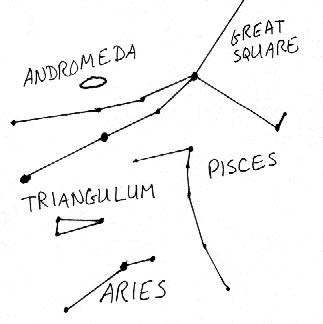Once again, the eclipse will be visible throughout the North American continent, and once again, the easterners have the advantage. The partial phase begins at 6:32 PM EST/5:32 PM CST, and partiality will already be in effect when the moon rises in the Mountain time zone. The total eclipse begins at 8:06 PM EST. The Pacific time zone will see the late stages of partiality or the total eclipse at moonrise.
 This eclipse will be considerably shorter than May's eclipse. In May, the moon passed near the center of Earth's shadow, and totality lasted almost an hour. This time, the moon will move through the lower edge of umbral shadow, and totality will last just 25 minutes. After the total phase ends, there will be another partial phase as the moon emerges from Earth's shadow. The second partial phase will end just after 10:00 PM EST.
This eclipse will be considerably shorter than May's eclipse. In May, the moon passed near the center of Earth's shadow, and totality lasted almost an hour. This time, the moon will move through the lower edge of umbral shadow, and totality will last just 25 minutes. After the total phase ends, there will be another partial phase as the moon emerges from Earth's shadow. The second partial phase will end just after 10:00 PM EST.
As always with lunar eclipses, it is hard to predict what you will see. During the partial phase, darkness moves across the full moon, causing the lighted portion to become a decreasing crescent. At totality, though, the moon does not disappear. Sunlight refracts through Earth's atmosphere and causes the moon to appear reddish. The exact color and brightness vary based on atmospheric conditions on Earth.
If you are out at dusk to watch the eclipse, take a moment to look west. Venus is hugging the horizon in the evening twilight, to the right of Antares and Scorpius. It is just beginning its run as winter's "evening star."
In the west, two small constellations are easy to find in the early evening. Triangulum is just below Andromeda. It doesn't have any exciting mythological dramas attached to it. It looks like a triangle, and it represents - surprise! - a triangle. It recognizes the ancient Greek achievements in mathematics. It has also been associated with deltas, both the Greek letter and the Nile River delta, as well as the island of Sicily.
Below Triangulum is Aries, the Ram. It is the first constellation of the zodiac because the Sun was in it at the spring equinox in the days when spring was considered the beginning of the year. That is no longer the case, as Earth's wobble puts the Sun in Pisces now, but Aries is still the leader of the zodiacal pack, at least in name. It is a small constellation that resembles a not-quite- straight line.
In mythology, Aries is the ram that originally carried the golden fleece. Two children who were half-human and half-god were being abused by their stepmother. The ram flew down from Olympus to rescue the children just at the moment their stepmother was planning to sacrifice them.

The Piker Press moderates all comments.
Click here for the commenting policy.